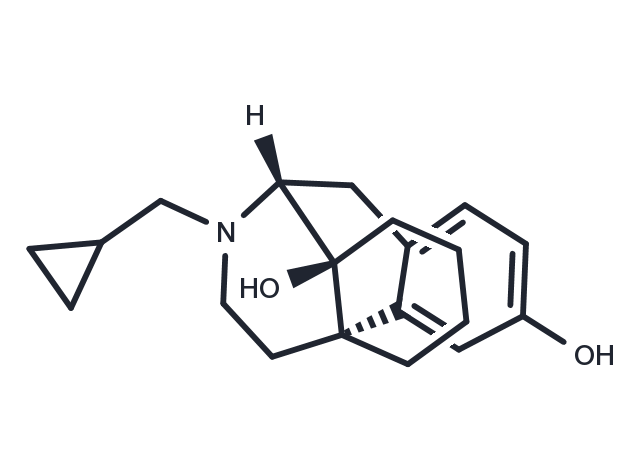Powder: -20°C for 3 years | In solvent: -80°C for 1 year


Oxilorphan acts as a μ-opioid receptor (MOR) antagonist but a κ-opioid receptor (KOR) partial agonist and has similar effects to naloxone and around the same potency as a MOR antagonist. Oxilorphan has some weak partial agonist actions at the MOR and can produce hallucinogenic/dissociative effects at sufficient doses, indicative of KOR activation. The KOR agonist effects of oxilorphan are associated with dysphoria, which combined with its hallucinogenic effects, serve to limit its clinical usefulness.

| Pack Size | Availability | Price/USD | Quantity |
|---|---|---|---|
| 25 mg | 8-10 weeks | $ 1,970.00 | |
| 50 mg | 8-10 weeks | $ 2,580.00 | |
| 100 mg | 8-10 weeks | $ 3,400.00 |
| Description | Oxilorphan acts as a μ-opioid receptor (MOR) antagonist but a κ-opioid receptor (KOR) partial agonist and has similar effects to naloxone and around the same potency as a MOR antagonist. Oxilorphan has some weak partial agonist actions at the MOR and can produce hallucinogenic/dissociative effects at sufficient doses, indicative of KOR activation. The KOR agonist effects of oxilorphan are associated with dysphoria, which combined with its hallucinogenic effects, serve to limit its clinical usefulness. |
| Synonyms | Oxilorfano, Oxilorphane, Bristol laboratories BC 2605, levo-BC-2605 |
| Molecular Weight | 313.43 |
| Formula | C20H27NO2 |
| CAS No. | 42281-59-4 |
Powder: -20°C for 3 years | In solvent: -80°C for 1 year
You can also refer to dose conversion for different animals. More
bottom
Please see Inhibitor Handling Instructions for more frequently ask questions. Topics include: how to prepare stock solutions, how to store products, and cautions on cell-based assays & animal experiments, etc.
Oxilorphan 42281-59-4 Oxilorfano levo-BC2605 Bristol laboratories BC2605 Oxilorphane levo-BC 2605 Bristol laboratories BC-2605 Bristol laboratories BC 2605 levo-BC-2605 inhibitor inhibit
